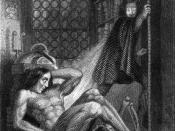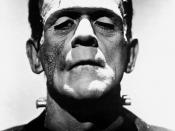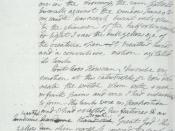Frankenstein . . . His very name conjures up images of plundered graves, secret laboratories, electrical experiments, and reviving the dead. Both maker and monster were originally conceived in the imagination of Mary W. Shelley during the summer of 1816 in Switzerland. Along with her live-in lover at the time, Percy Shelley, Dr. John Polidori and Lord Byron, who were staying in neighboring households on the shores of Lake Geneva, the eighteen-year-old Shelley decided to try her hand at writing a ghost story. Urged by Percy Shelley to develop the result into a book-length work, Frankenstein; or, The Modern Prometheus was published anonymously a year and a half later.
This captivating story of Victor Frankenstein and his monstrous creation has been greatly admired and imitated over and over again. In fact, most adaptations of the work share two common themes with the original classic: The idea that people should not judge others solely on their physical appearance and the theory that experimenting with nature through the pursuit of knowledge, can have disastrous results, and is better left to evolution.
In Shelley's novel, Frankenstein's creation was entirely innocent from the very beginning. As Asimov indicates: "Brought to life through Frankenstein's action, the Monster was cruelly abandoned entirely because of his peculiar appearance-which was not his fault" (6). Only one character in the story does not immediately interpret the creature as being evil. This would be Father De Lacey, who is blind. De Lacey is given the chance to listen to the creature without judging him, and replies: "I am blind, and cannot judge of your countenance, but there is something in your words which persuades me that you are sincere" (92). This chance of happiness for the monster is quickly dashed by his appearance, for once the old man's family sees...


